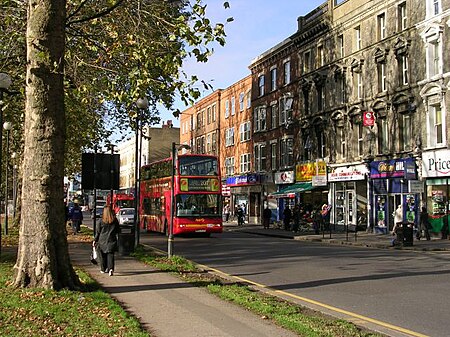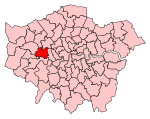Uxbridge Road

Uxbridge Road is the name of the A4020 road in West London. The 12-mile (19 km) route starts at Shepherd's Bush Green and goes west towards Uxbridge. It passes through Acton, Ealing, Hanwell, Southall, Hayes, Harrow and Hillingdon. Uxbridge Road is a major road in west London passing through many retail and large residential districts. It provides several transport connections for commuters with many London Underground stations situated either on it or within walking distance. A number of London buses also operate along the road, for varying distances. Bus routes 207, 427 and 607 are specifically designed to operate along this road, staying on it for their entire route. The road has become notorious for traffic jams, especially during "rush hour" and many drivers will do their best to avoid it. The road does not become a motorway at any stage, nor does it meet any motorways along its route, but it does meet non-motorway trunk roads: namely the West Cross Route, North Circular Road, and The Parkway In a 1912 book of verse Evelyn Underhill published a poem entitled "Uxbridge Road". In 1972, the thirty-third episode of Monty Python's Flying Circus featured a sketch about a team of mountaineers "climbing" the Uxbridge Road.
Excerpt from the Wikipedia article Uxbridge Road (License: CC BY-SA 3.0, Authors, Images).Uxbridge Road
Fordhook Avenue, London Acton (London Borough of Ealing)
Geographical coordinates (GPS) Address Nearby Places Show on map
Geographical coordinates (GPS)
| Latitude | Longitude |
|---|---|
| N 51.51028 ° | E -0.28777 ° |
Address
Fordhook Avenue
Fordhook Avenue
W5 3LR London, Acton (London Borough of Ealing)
England, United Kingdom
Open on Google Maps







